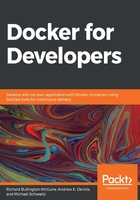
上QQ阅读APP看书,第一时间看更新
Further reading
If you would like to look into some of the subjects discussed so far in-depth, refer to the following links:
- This link partially describes how Google's search algorithm is implemented: https://www.google.com/search/howsearchworks/
- This link describes Google's search infrastructure: https://netvantagemarketing.com/blog/how-does-google-return-results-so-damn-fast/
- This link also describes Google's search infrastructure: https://www.ctl.io/centurylink-public-cloud/servers/
- This link describes IBM's early technology to support virtualization: https://en.wikipedia.org/wiki/IBM_CP-40
- This link describes an old program that emulates a PC to run Windows on a non-Windows host: https://en.wikipedia.org/wiki/SoftPC
- This link provides an introduction to the VMWare company: https://en.wikipedia.org/wiki/VMware
- This link describes Oracle's VirtualBox: https://en.wikipedia.org/wiki/VirtualBox
- This link introduces Parallels: https://en.wikipedia.org/wiki/Parallels_(company)
- This link discusses the role of the Hypervisor in virtualization and containerization: https://en.wikipedia.org/wiki/Hypervisor
- This link describes VMWare's standalone operating system designed specifically to run virtual machines: https://en.wikipedia.org/wiki/VMware_ESXi
- This link describes the Xen hypervisor: https://15anniversary.xenproject.org/#Intro
- This link describes Amazon's AWS virtual machines: https://en.wikipedia.org/wiki/Amazon_Elastic_Compute_Cloud
- This link describes kernel features to support virtualization and containerization: https://en.wikipedia.org/wiki/Kernel-based_Virtual_Machine
- This link describes using QEMU to emulate Raspberry Pi on a workstation: https://azeria-labs.com/emulate-raspberry-pi-with-qemu/